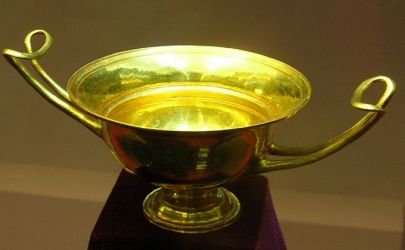
Golyama Kosmatka is one of the biggest mounds ever found on Balkan Peninsula. It is situated near the town of Shipka and it dates from the end of V c B.C-beginning of IV c. B.C. The tomb consists of 13m long corridor and three chambers. In the third chamber there is a ritual bed made by enormous granite block with almost 60 tones weight.
The richest gold findings were found in that tomb-about 20 objects. Among them is a very precisely made golden wreath from oak leaves (45sm diameter), a golden kiliks (a wide wine glass), golden heads of a goddess and a deer. The most ancient object ever found in a Thracian grave is a silver shell with golden decoration. A bronze man’s head was found in Golyama Kosmatka too. All findings impress with their marvelous workmanship and they are valuable examples of art. They are exhibited in the Historical Museum of Kazanlak.
Archeologists believe they have found the tomb of the greatest Thracian king Seuth III which Residency and main dynasty town was situated near Kazanlak-so called Seuthopolis. And according to Thracian faith only a ruler could have had such wonderful golden wreath which purpose and meaning were sacred.
|

